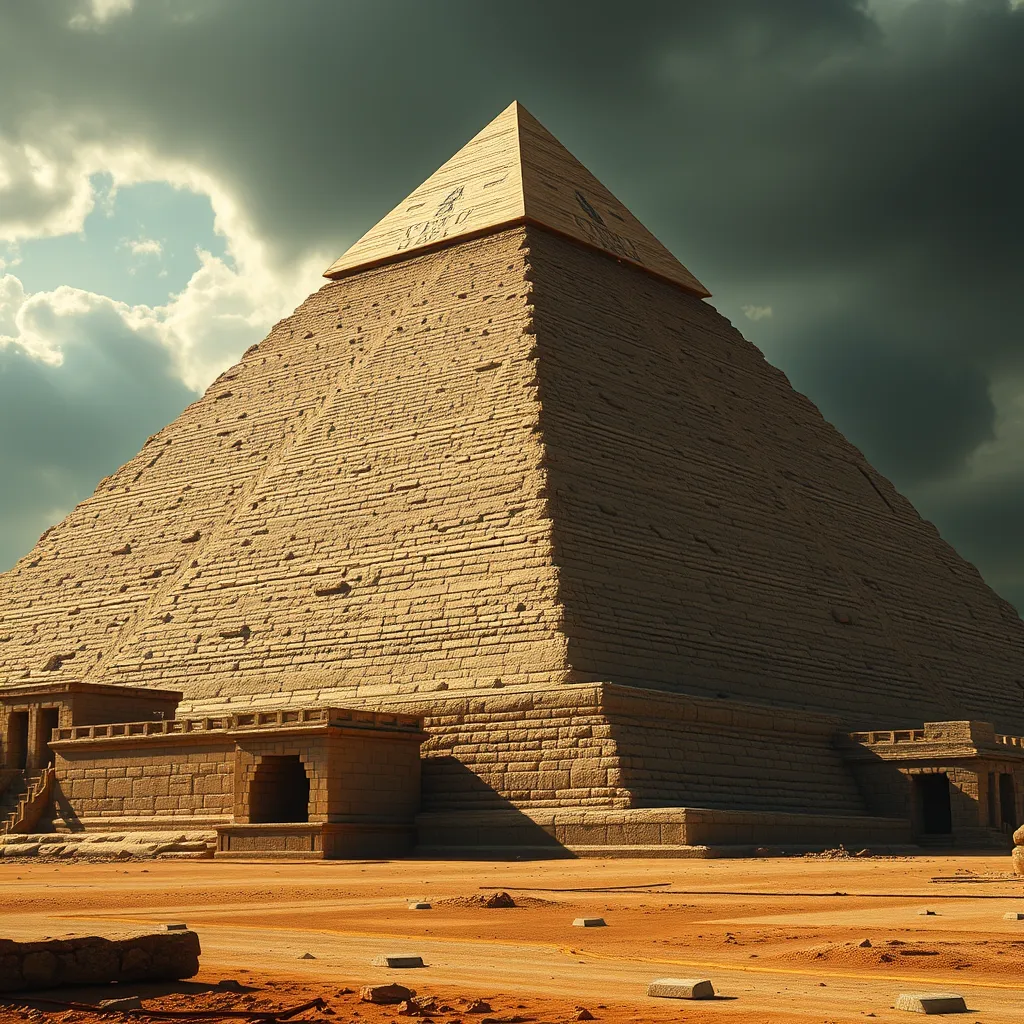The Secret of the Pyramids: Unveiling the Hidden Knowledge of the Ancient Egyptians and their Engineering Prowess
I. Introduction
The pyramids of Egypt stand as monumental testaments to the ingenuity and ambition of one of the world’s oldest civilizations. These colossal structures, primarily built as tombs for pharaohs, reflect a profound understanding of engineering and architectural techniques that still astonish modern scholars and architects alike.
In this article, we will delve into the concept of hidden knowledge that surrounded pyramid construction, exploring the advanced engineering practices of the ancient Egyptians. Our purpose is to illuminate the historical context, architectural innovations, and the spiritual significance of these remarkable structures while considering their lasting legacy.
II. The Historical Context of Ancient Egyptian Civilization
Ancient Egyptian society was characterized by a rich tapestry of culture, religion, and governance. The civilization flourished along the banks of the Nile River, where the fertile land supported agriculture, trade, and a burgeoning population.
The pyramids held immense significance, serving not only as monumental tombs but also as symbols of the pharaohs’ divine authority and their connection to the gods. They were critical to the political landscape, reinforcing the power of the ruling class and their beliefs about the afterlife.
Key figures in the construction of the pyramids included the pharaohs, who commissioned these grand structures, and skilled architects and workers who translated their visions into reality. Notable pharaohs such as Khufu and Snefru played pivotal roles in the development of pyramid construction techniques.
III. Architectural Innovations and Techniques
The construction of the pyramids involved a series of innovative architectural methods and techniques that showcased the Egyptians’ engineering prowess. The most famous pyramids, such as the Great Pyramid of Giza, were built using massive limestone blocks, some weighing several tons.
- Construction Methods: Ancient Egyptians employed a variety of techniques, including the use of ramps to transport heavy stones and precise alignment to ensure structural integrity.
- Materials: Primarily limestone, granite, and basalt were used, sourced from nearby quarries, showcasing the Egyptians’ understanding of material properties.
- Tools: While they lacked modern machinery, the Egyptians used simple yet effective tools like levers, sledges, and chisels to shape and move stones.
The organization of labor was also crucial. A well-structured workforce, often composed of skilled laborers and seasonal workers, was essential for the successful completion of these monumental projects.
IV. Mathematical and Astronomical Knowledge
The design of the pyramids reflects a sophisticated understanding of mathematics and astronomy. The Egyptians utilized advanced mathematical principles to achieve the precise dimensions and angles required for pyramid construction.
- Mathematical Principles: The use of the Golden Ratio and specific geometric shapes was evident in the layout of the pyramids, demonstrating their understanding of symmetry and proportion.
- Astronomical Alignments: Many pyramids were aligned with remarkable precision to celestial bodies, indicating a deep connection with astronomy. For instance, the Great Pyramid of Giza is oriented to true north.
- Advanced Knowledge: Evidence suggests that the ancient Egyptians possessed a robust understanding of geometry, enabling them to create structures that have withstood the test of time.
V. Symbolism and Spiritual Significance
The pyramids were imbued with profound symbolism, representing not only the power of the pharaohs but also the ancient Egyptians’ beliefs about the afterlife. They were designed to facilitate the journey of the deceased into the next world.
- Symbols of Power: The sheer scale of the pyramids served to reinforce the pharaohs’ status as divine rulers, embodying their connection to the gods.
- Spiritual Beliefs: The pyramids were seen as gateways to the afterlife, with intricate burial chambers and passages designed to protect the pharaoh’s spirit.
- Iconography and Inscriptions: Hieroglyphics and carvings within the pyramids depicted religious texts and rituals, reflecting the spiritual beliefs of the ancient Egyptians.
VI. Modern Discoveries and Technologies Used in Pyramid Research
In recent years, advancements in technology have dramatically changed our understanding of the pyramids. Archaeological methods have evolved, allowing researchers to uncover new insights into their construction and purpose.
- Archaeological Methods: Techniques such as ground-penetrating radar, 3D scanning, and drone surveys have revealed hidden chambers and passages within the pyramids.
- Recent Discoveries: New findings, such as the identification of previously unknown structures, challenge traditional narratives about pyramid construction and use.
- Impact of Modern Science: The application of scientific methods has shed light on the materials used and the techniques employed, unraveling some of the ancient engineering secrets.
VII. The Legacy of the Pyramids in Engineering and Architecture
The influence of the pyramids extends far beyond their historical context; they have left an indelible mark on architecture and engineering throughout the ages. The principles derived from pyramid construction continue to inspire architects and engineers today.
- Influence on Later Structures: The design elements and construction techniques of the pyramids can be seen in various architectural styles, from ancient temples to modern skyscrapers.
- Lessons Learned: The organization of labor, resource management, and innovation in construction methods offer valuable lessons for contemporary engineering practices.
- Source of Inspiration: The pyramids remain a source of inspiration for modern architects, symbolizing human achievement and the quest for immortality through design.
VIII. Conclusion
In summary, the pyramids of Egypt represent a remarkable achievement in engineering and a deep reservoir of hidden knowledge from the ancient world. The advanced techniques and profound symbolism embedded within these structures continue to captivate scholars and enthusiasts alike.
Our fascination with the pyramids endures, prompting ongoing exploration and research into their mysteries. As we strive to preserve this ancient legacy, we also uncover the timeless lessons and inspirations that these monumental structures offer to modern society.




